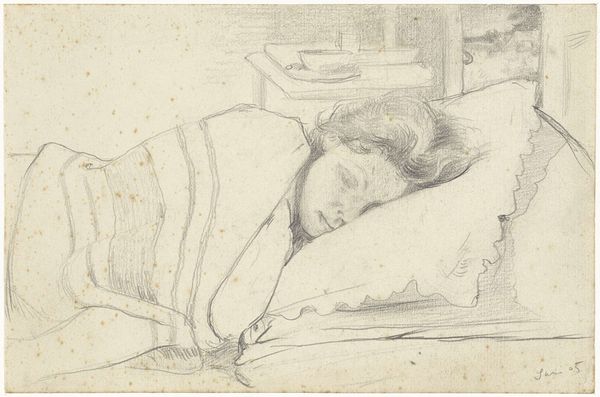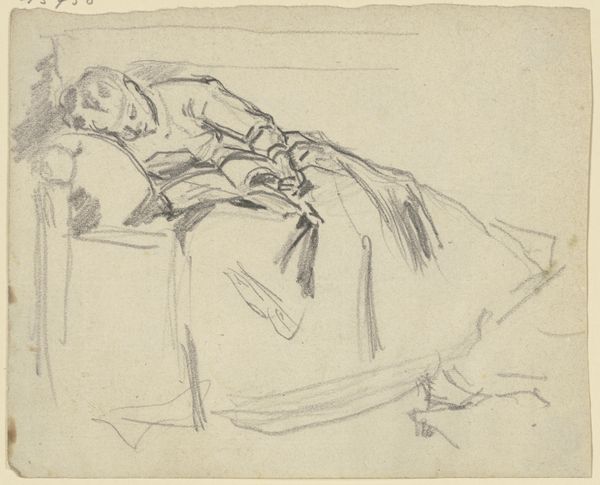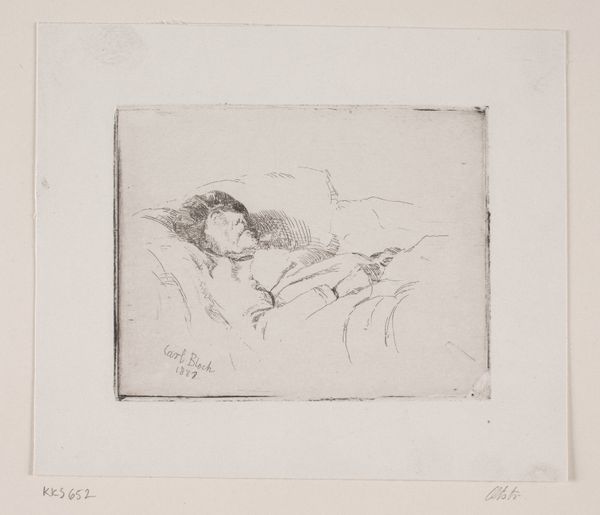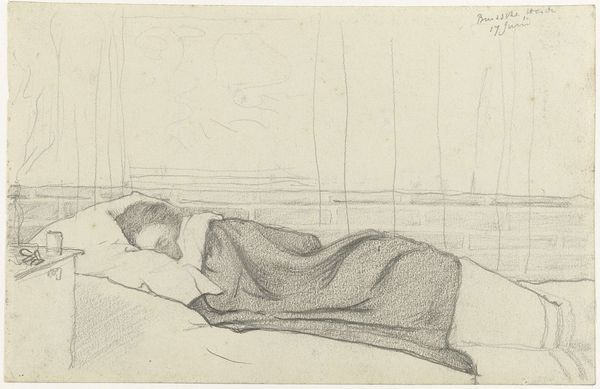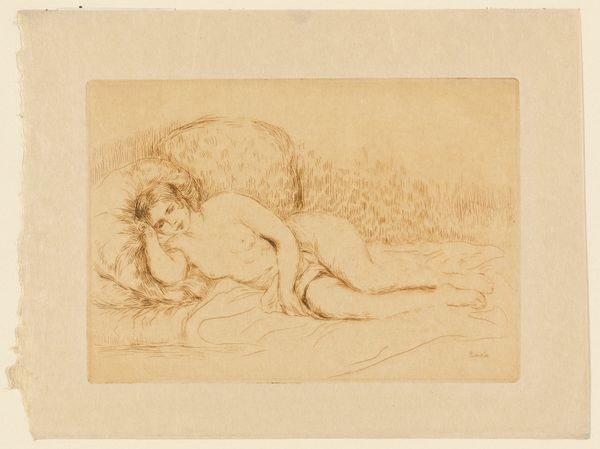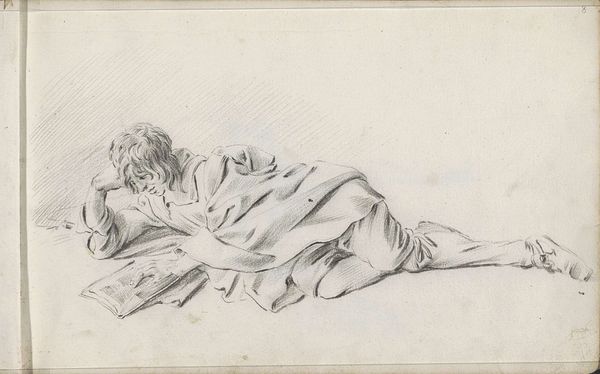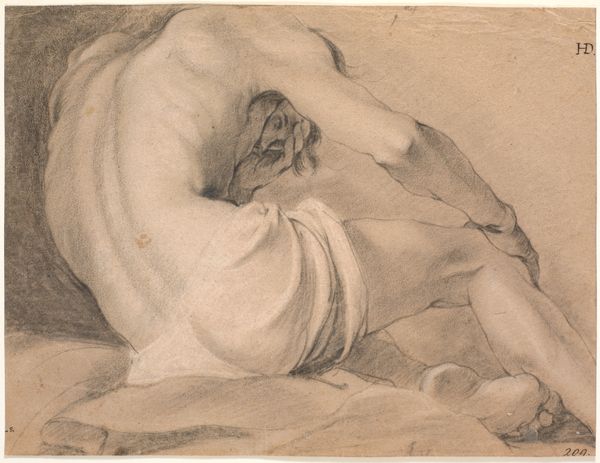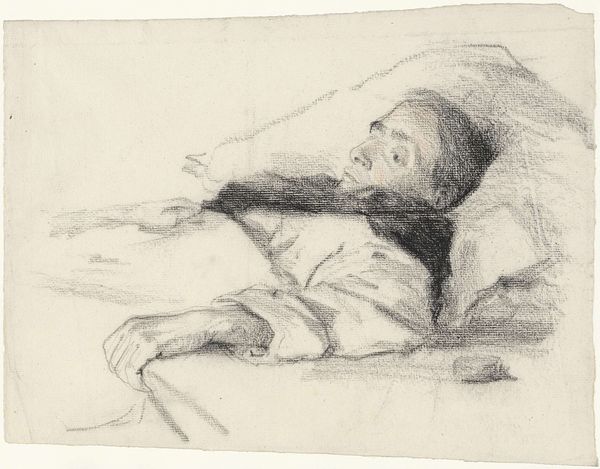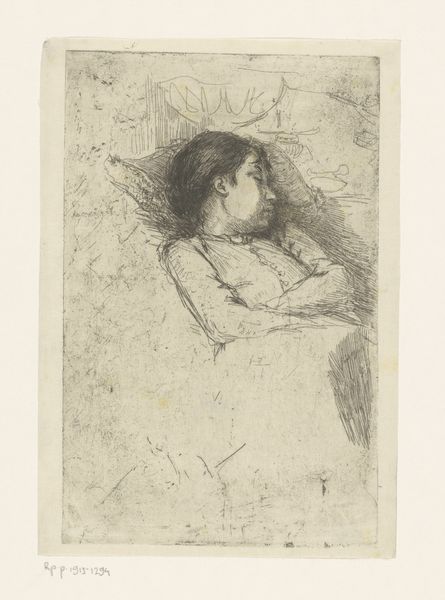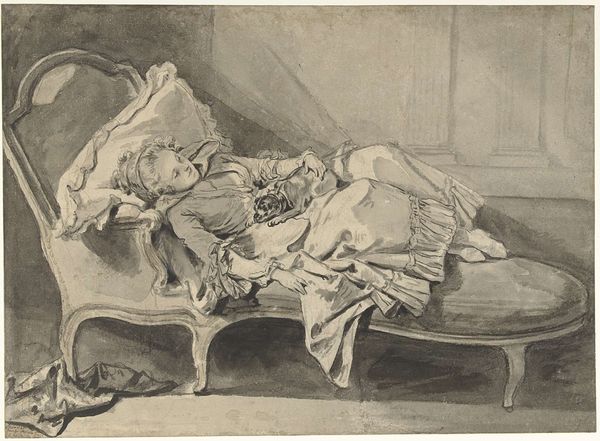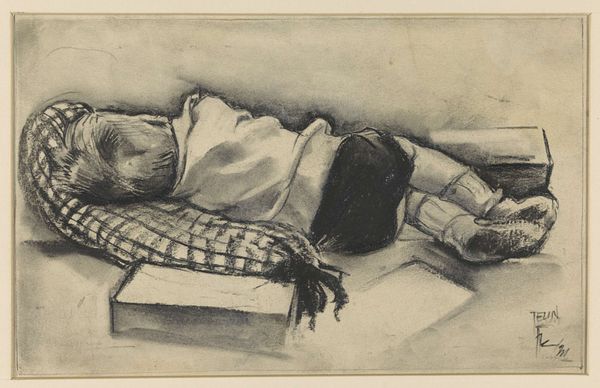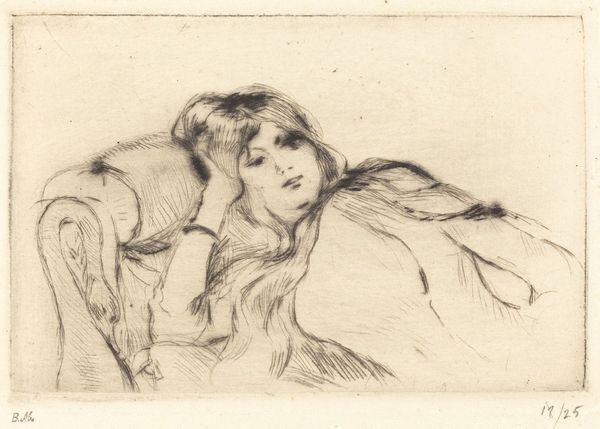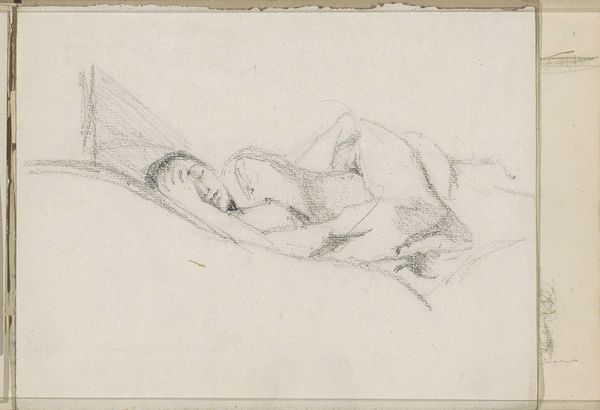
drawing, print, etching
portrait
drawing
etching
genre-painting
Dimensions: 98 mm (height) x 124 mm (width) (bladmaal), 89 mm (height) x 117 mm (width) (plademaal)
Curator: So fragile. That's my first thought looking at Carl Bloch's etching, "The Sleeping Child." He created this back in 1881. Editor: It feels so ephemeral. Like a dream barely captured on the paper's surface. You can almost feel the quiet stillness. Curator: Bloch’s incredible control over the etching needle makes you almost forget it's an etching at all. He’s rendered such soft detail. Look at the lines suggesting the folds of the pillow, and the subtle shading under the child’s cheek. The process becomes secondary to the sentiment, doesn’t it? The image itself appears, almost unbidden, out of a silvery ground. Editor: Except the “process” *is* the sentiment here. Think about the labor involved—etching demands deliberate actions and patience. Every line is consciously placed. So this “dream” is, in fact, the product of hours, maybe days, of careful, repetitive work in the studio, removed from domestic life or easy childcare. And an etching suggests the potential for reproducibility—it can be copied again and again on paper, it is material, produced by an etcher with tools that, when the piece is popular or valuable, means the artwork may be commercialized by the artist and beyond. That interplay interests me more than the tenderness it portrays at face value. Curator: I love how you pull those threads out! But I still keep circling back to how Bloch makes us complicit, the viewer as quiet observer, respecting the child's peaceful slumber. It makes me want to protect the space. Editor: Or… considering the date—1881— perhaps contemplate the space necessary, not just to portray such “tenderness,” but to allow an artist such as Bloch to dwell at the center of this domestic drama and to profit by it too. What was the social value placed on children then? How was "tenderness" manufactured into desirable goods and artwork? It’s fascinating, don't you think, that this very private, intimate moment became something reproducible and consumable? Curator: Food for thought. This etching has opened my eyes again, just from considering its process. It now feels full of stories layered over each other, and more resonant for it.
Comments
No comments
Be the first to comment and join the conversation on the ultimate creative platform.
